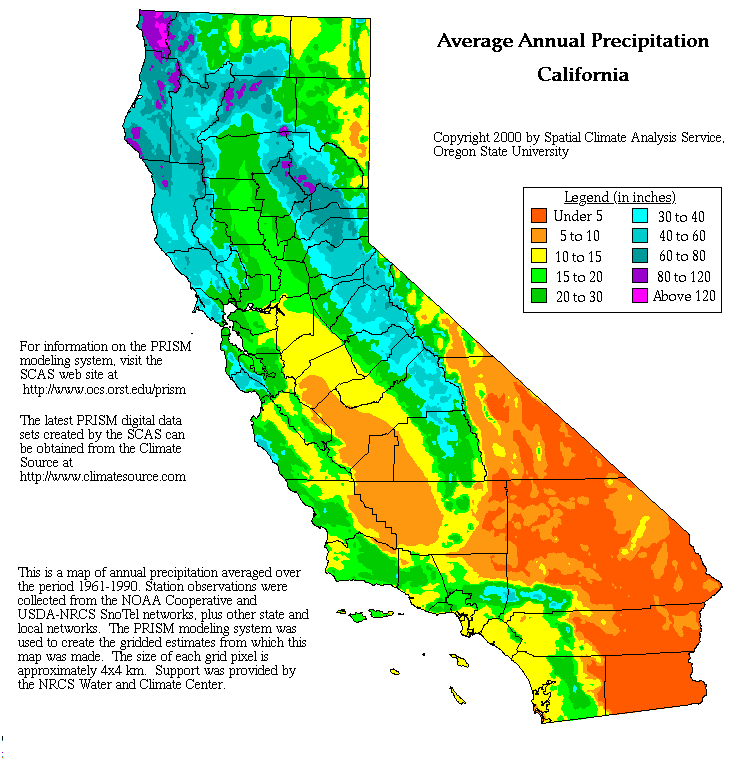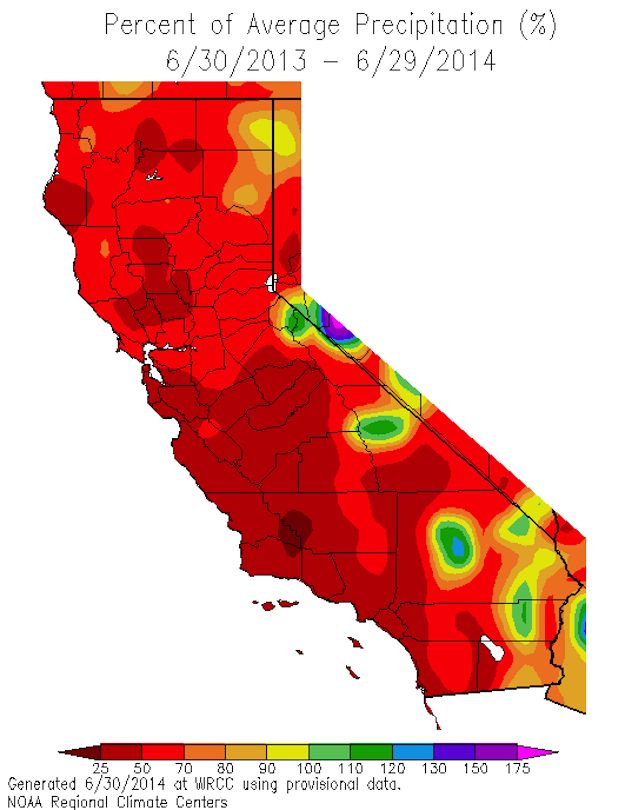

This delicate balance means that a dry rainy season can have lasting consequences. Precipitation in California occurs from November to May, with the vast majority of rain and snowfall occurring in the winter months across the state. A meteorological drought may be short lived without causing disturbance but when longer lasting may enter other categories according to its impacts.

There are five major categories of drought: (1) Meteorological, (2) Agricultural, (3) Hydrological, (4) Socioeconomic, and (5) Ecological. California is not only the most populous state and largest agricultural producer in the United States, it is also the most biodiverse as such, drought in California can have a far reaching economic and environmental impacts. Since the California water supply is attained from numerous sources, fulfilled by varied and intricate weather patterns, there is no one cause of drought. Drought is generally defined as “a deficiency of precipitation over an extended period of time (usually a season or more), resulting in a water shortage.” A lack of rainfall (or snowfall) or precipitation in meager quantities, higher than average temperatures and dry air masses in the atmosphere commonly underlie drought conditions these natural factors are further complicated by increases in populations and water demands. The historical and ongoing droughts in California result from various complex meteorological phenomena, some of which are not fully understood by scientists. It also shows the present precipitation level and its percentile within the historical data for the day of the water year.Percent area in U.S. You can see the current water year plotted on this to show how it compares to historical values.

The second graph shows the percentiles of precipitation over the course of the historical water year, spreading out like a cone from the start of the water year (October 1). The top graph is a histogram of water year precipitation totals on the specified date (in blue) as well as the precipitation total for the current water year in red. The visualization consists of two primary graphs both of which show the range of historical values for precipitation. Data from the CDEC website appears to be updated at around 8:30am PST each day. These stations are tracked because they provide important information about the state’s water supply (most of which originates from the Sierra Nevada Mountains). There are three sets of stations that are tracked in the data and these plots: Other California water-related visualizations include reservoir levels in the state as well. I used data for California rainfall totals from the California Department of Water Resources. This year has been a relatively dry year and wanted to visualize how this year compares with historical levels for this time of year. It’s winter in California and that means the rainy season (snowy in the mountains). How do current California rainfall and precipitation totals compare with Historical Averages?Ĭheck out the California reservoir dashboard.


 0 kommentar(er)
0 kommentar(er)
